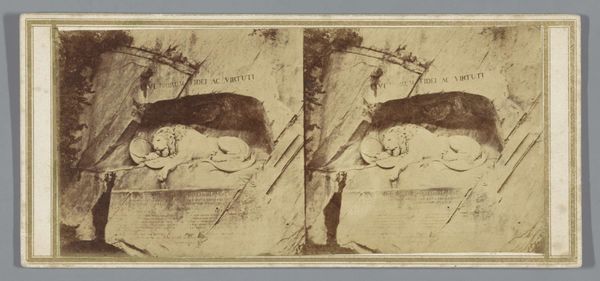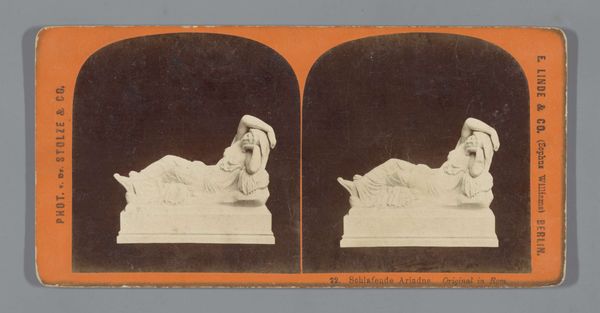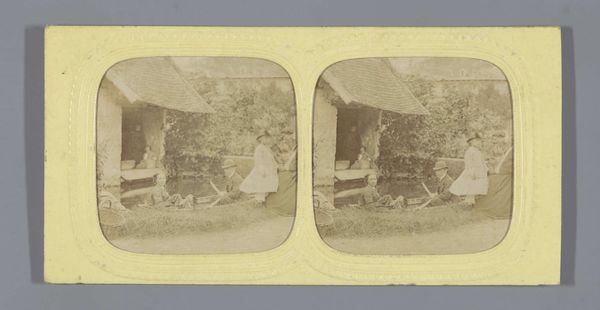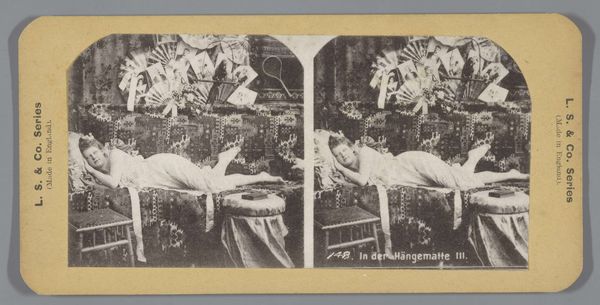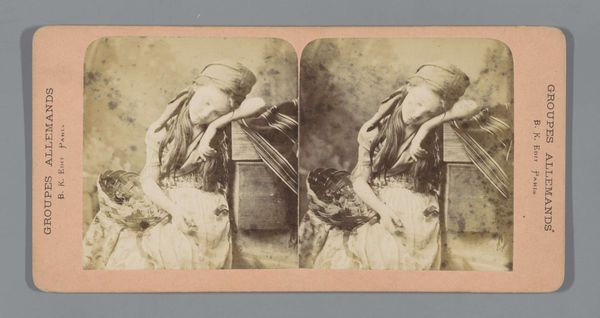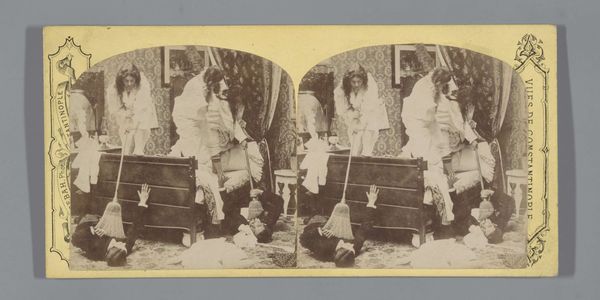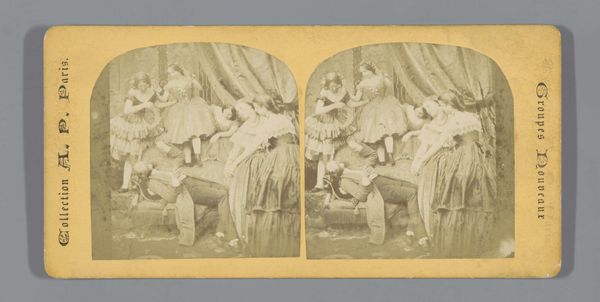
photography, sculpture
#
landscape
#
classical-realism
#
photography
#
sculpture
Dimensions: height 86 mm, width 170 mm
Copyright: Rijks Museum: Open Domain
Editor: This stereo card photograph, titled "Venus met de schelp in de tuinen van Versailles" – Venus with a shell in the gardens of Versailles – appears to date from 1855 to 1875. What immediately strikes me is the duality of the composition. There are two separate images here that force my eyes to flit back and forth in a disconcerting way. How would you interpret this work, Curator? Curator: Let's consider this from a formalist viewpoint, dissecting its visual elements. Observe how the composition adheres to a classical, almost sculptural aesthetic, mirrored in the sculpture itself. The sepia tones establish a stark contrast, highlighting texture and form. We see two versions of the same statue and its plinth behind an ornate white fence and hedge; how do you feel this arrangement draws the viewer’s eye, both within each photograph and between them? Editor: The composition feels rigidly structured, perhaps deliberately so. The light seems consistent across both views, and they each frame the sculpture in an identical way, like mirror images captured from a slightly different perspective. Curator: Precisely. Note the subtle variance in perspective provided by the stereo effect, which adds depth and invites the viewer to examine details more intimately. This prompts a deconstruction of its visual language—how the use of symmetry and perspective creates a calculated viewing experience. Is it trying to suggest that beauty may be apprehended in at least two very distinct, but subtly, related perspectives? Editor: I think it's fascinating how such an ostensibly straightforward image – a classical sculpture in a garden – becomes quite complex when viewed through the lens of formal analysis. Thank you. Curator: It serves as a lesson that decoding visual structure allows a greater apprehension of this photograph's visual intentions.
Comments
No comments
Be the first to comment and join the conversation on the ultimate creative platform.
